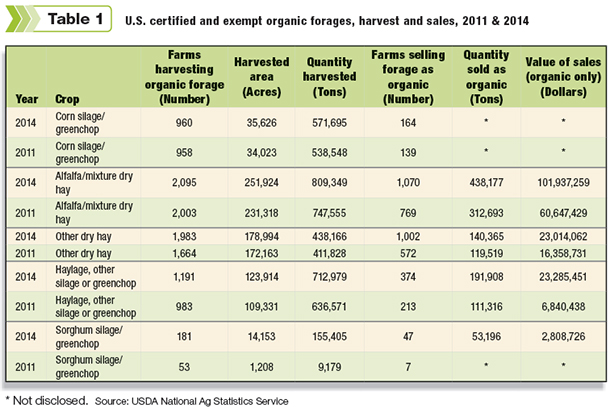The Organic Survey defined three organic operation groups – certified, exempt and transitioning:
- A certified farm meets NOP standards to market under the “USDA organic” seal.
- An exempt farm also meets the criteria for marketing as organic but, because of annual sales less than $5,000, is exempt from fees associated with certification.
- A transitioning farm produces organic products by the NOP standards but has not met the three-year organic practices requirement.
The numbers in Table 1 list only farms, acreage and forage tonnage from organic and exempt farms, and farms, tonnage and value of forages sold as organic (some organic forages are fed on-farm or sold on the conventional forage market). For example, 2,095 farms produced organic alfalfa/alfalfa mixture dry hay in 2014, but only 1,070 farms sold about 54 percent of the crop as organic hay.

Additionally, the USDA withholds data that may disclose information about the operations of an individual farm or business.
Find the full report at the USDA Census of Agriculture website.
Organic survey
USDA’s National Agricultural Statistics Service (NASS) is gathering data on certified organic crops and livestock in the U.S.
The Certified Organic Survey mail survey asks farmers to provide information on acreage, production and sales for a variety of certified organic crop and livestock commodities. In addition, NASS is gathering information about organic farmers’ production and marketing practices.
Organic farmers who don’t return mailed forms or complete the survey online by Feb. 19 may be contacted by phone for personal interviews.
A survey report is scheduled for September 2016.
For more information about the Certified Organic Survey, visit the NASS website. FG











